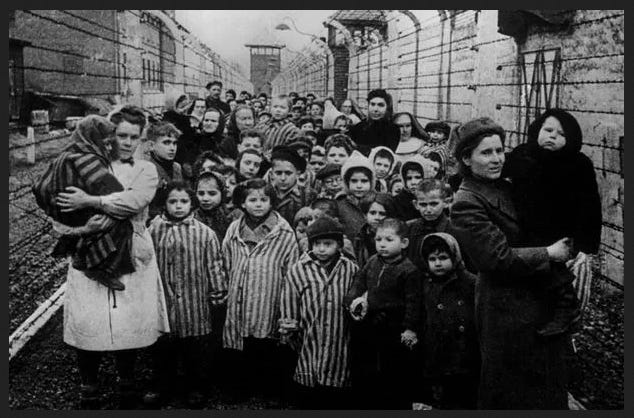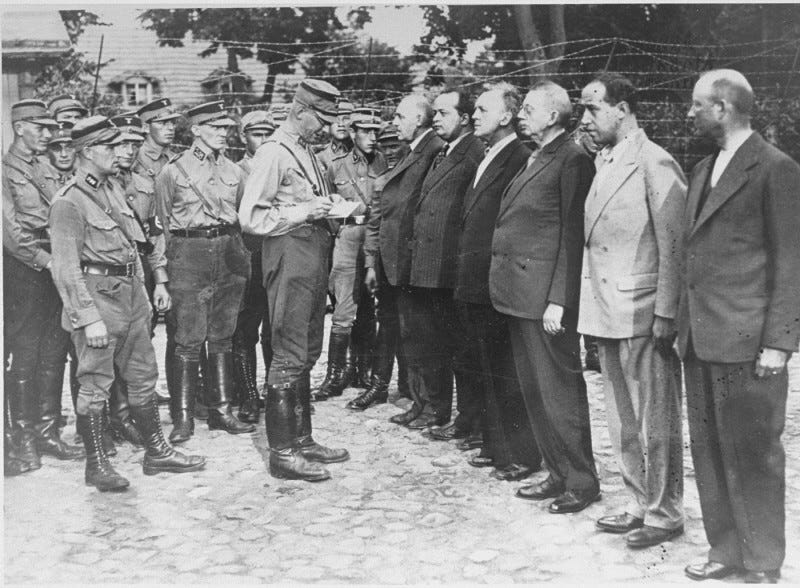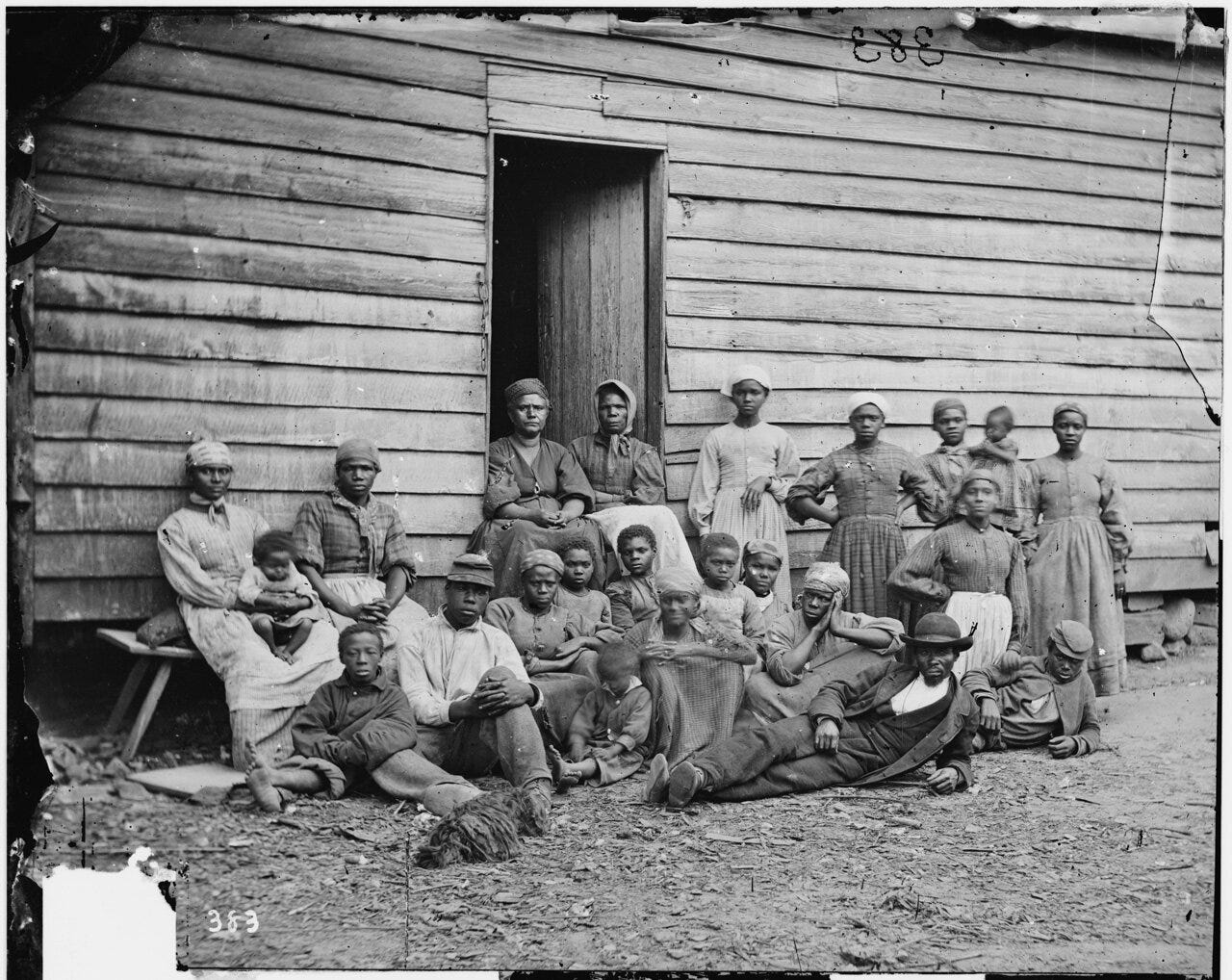Project 2025 with its hidden Christian nationalist agenda is by extension aiding and abetting the following concerns:
An unstated goal of Christian nationalism is a restoration of a political environment that accepts and allows a return of the practice of slavery; albeit by making the greatest possible uses of the intellectual resources available to true-red-through-conservative proponents, most notably via the networking efforts of the Heritage Foundation and its Project 2025 advisory board member partners. As can be seen in the recent revelations of the sophisms promulgated via the state of Florida's Educational Hierarchy most notably in the conflating in the minds of its students through their modified school textbooks the practices of Negro slavery with later colonial period indentured servitude; Thus, setting up in the minds of upcoming generations an understanding of an "acceptable" labor system. All the other necessary elements to aid and abet these things are all being subtly developed and put into place if not in some cases are not are already operating.
Historian
discusses the most recent developments in the American political sphere with her examination of Florida’s Governor Ron DeSantis and his efforts to promote a sanitized version of historically recorded American Slavery practices, distorting the actual truth into a body of revisionist lies.“Taken as a whole, the Florida social studies curriculum describes a world in which the white male Founders of the United States embraced ideals of liberty and equality—ideals it falsely attributes primarily to Christianity rather than the Enlightenment—“
“U.S. Black enslavement was not the same as indentured servitude except perhaps in the earliest years of the Chesapeake settlements when both were brutal—historians argue about this— and Indigenous enslavement was distinct from servitude from the very beginning of European contact.”
“Taken together, this curriculum presents human enslavement as simply one of a number of labor systems, a system that does not, in this telling, involve racism or violence.”
The above quotes can be found at the following post:
With these significantly serious issues in view the following block quote takes on a great importance for all Americans concerned with regards to the current Trumpian trends to inculcate a severely anti-democratic, illiberal mindset, and worldview into anyone who will either unthinkingly, unwillingly, or enthusiastically accept its agendas and policies;
The Cunning of History seems to me to be one of these. It is a very brief work—a long essay—but it is so rich in perception and it contains so many startling—indeed, prophetic— insights that one can only remain baffled at the almost complete absence of attention it suffered when it was first published in 1975. When I first read Rubenstein's book I felt very much the same effect of keen illumination that I did when, in the early stages of writing The Confessions of Nat Turner, I happened to read Stanley Elkins's Slavery—a work that shed fresh light on American Negro slavery in such a bold and arresting way that, despite the controversy it provoked and the revisionist criticism it produced, it has become a classic in its field. It is perhaps a fitting coincidence that Rubenstein discusses Elkins at some length in this book; certainly both writers share a preoccupation with what to my mind is Perhaps the most compelling theme in history, including the history of our own time—that of the catastrophic propensity on the part of human beings to attempt to dominate one another. If slavery was the great historical nightmare of the eighteenth and nineteenth centuries in the Western world, it was slavery's continuation, in the horror we have come to call Auschwitz, which is the nightmare of our own century. Auschwitz, like the core of hell, is the symbolic center of The Cunning of History, and while the theological and political ramifications radiating from this center provide many of the book's most illuminating insights, it is Auschwitz—simply Auschwitz—that remains Rubenstein's primary concern. Page vii,
William Styron, Introduction to The Cunning of History: The Holocaust and the American Future by Richard L. Rubenstein, 1975.
Nixon sought to secure consent to his program, if not by physical terror, then certainly by the beginnings of bureaucratic terror. Perhaps this was best seen in his attempts to utilize the Internal Revenue Service to harass political opponents as well as public personalities whose style of life or political commitments were distasteful to him. In addition to tax harassment, there were other attempts at bureaucratic harassment such as the threat to revoke the licenses of television stations owned by the Washington Post. The intent of the threatened punitive action was clear: opponents were warned' that there were heavy penalties involved in opposing Richard Nixon. Such use of power was an important initial step in the direction of government by terror. Fortunately, the administrators of the most important government agency involved, the Internal Revenue Service, were seldom willing to go along. In this respect the federal bureaucracy, whatever its faults, still retained a measure of independence from the chief executive, something the German bureaucracy felt honor bound not to do after Hitler's accession to power. It may seem a long way from the improper use of the Internal Revenue Service, the FBI, the CIA and other federal agencies to harass opponents to a society of total domination, but Nixon had taken several important steps in that direction. He attempted to replace the give and take of the normal American political process by bureaucratic harassment.
Fear was to replace debate and persuasion. In addition, he had established a category of citizens, the so-called "enemies' lists," who were to be subject to punitive government action, although they had broken no law and for whom there was no legal justification for any kind of government hostility. Those who had opposed him had, in fact, done nothing more than exercise their normal right to take a stand on political issues.
We must remember that the German concentration camps were originally set up to detain and punish those who had broken no law and against whom no punitive action could legally be justified. Nixon and his staff did not propose anything as radical as permanent detention camps, but they did seek extralegal methods of punishing political adversaries.
Among the bitter lessons of the Nixon administration is that an American president can be tempted to resort, if not to overt terror, at least to extralegal bureaucratic harassment to secure the compliance of the governed. And, if the Nazi period has any political moral, it is that bureaucratically planned and executed domination can be more thorough-going and effective than all other systems of domination. Furthermore, the discovery of the Watergate break-in was a fortunate accident. At the beginning of the second term, the Nixon administration had openly demonstrated its contempt for the legislative branch and its intention to deprive the federal bureaucracy of any residual independence.
It is not pleasant to contemplate the measures the Nixon administration might have taken had it been able to proceed without hindrance. Because of Watergate, Nixon's ability to employ extralegal means of harassment was unexpectedly curtailed. Were it not for Watergate, the Nixon presidency might have proceeded from relatively mild to ever more radical measures.
At each step along the way, Nixon's ability to silence opposition would probably have fallen short of expectations. The tax and licensing harassment would not have created the fear they were intended to. It is difficult to believe that, once embarked on an extralegal course, the Nixon administration would have accepted failure without attempting ever more radical measures.
It would be comforting to think that the abuses of power that occurred in the Nixon administration were due solely to his moral and political shortcomings. Unfortunately, the problem will not go away with the departure of Richard Nixon. The abuses occurred because the structure of government put the capacity to act as did Nixon in the hands of any president willing to employ it and clever enough to get away with such behavior. The bureaucracy that Nixon sought to use extralegally might be so used by a future president. Should, for example, the economic crisis continue to deteriorate or should a catastrophic war break out, a future president might be tempted by the readiness of a desperate nation to accept radical measures in order to solve its woes. The overwhelming power of modern government is bound to increase no matter who is president. And not every President will be as clumsy or as noncharismatic as Nixon.
Nixon was tempted to expand the power available to him because of his inability to effectuate his program through the normal political processes. Pages 80-83
Nevertheless, we have already seen how the Nixon administration attempted to ignore those restraints and no one can tell what a Nixon-like administration might do in the future. Page 87
The Cunning of History: The Holocaust and the American Future by Richard L. Rubenstein, 1975.
Bernard Lynch's "Slave Pen" at 5th and Myrtle Streets was the epicenter of the slave trade in St. Louis. This 1852 picture by Thomas Easterly is the only known photo of of Lynch's Slave Pen.
Missouri Historical Society
Bernard Lynch was the most prominent trader of enslaved people in St. Louis. His primary trade site was known as “Lynch’s Slave Pen” and was located at 5th and Myrtle streets. This prison incarcerated enslaved people about to be sold at auction, freedom seekers who had been captured, and free Blacks who had violated the law. These people were regularly subjected to violent punishments by Lynch’s employees. Auctions occurred at least once a week near the St. Louis Courthouse. (Circa 1852)
https://www.nps.gov/articles/000/the-slave-trade-in-st-louis.htm
Point of Honor historic slave community
Slavery in Lynchburg
During the 19th century, Lynchburg was home to a thriving economy based primarily on tobacco. Enslaved men, women, and children worked in tobacco fields, warehouses, and factories, as well as in homes across the city. By 1830, almost half of the town’s population was Black, either enslaved or free. Tobacco was not the only industry taking advantage of free labor; mills, manufacturing, construction, and foundries all were part of the vast slave economy.
Lynchburg had a “decentralized” slave market, which meant auctions took place all over the city. By 1860, nearly 74% of the white households within the city either owned or rented slaves. Renting allowed them to create contracts for a specific amount of time or for a job without having to pay the expenses or taxes associated with being an enslaver. The counties surrounding Lynchburg had different ratios; fewer families owned enslaved people, but the few who did were more prolific in the buying and selling of humans.
Thomas Satterwhite Noble's first professional painting was "Last Sale of the Slaves," which he completed in 1865. This oil painting depicts an auction near the steps of the St. Louis Courthouse that reportedly occurred on January 1, 1861.
A final word of warning should be taken from this last quote from The Cunning of History: The Holocaust and the American future,
“At Auschwitz, the Germans revealed new potentialities in the human ability to dominate, enslave, and exterminate. They also revealed new areas in which capitalist enterprise might profitably and even respectably be employed. The camps were thus far more of a permanent threat to the human future than they would have been had they functioned solely as an exercise in mass killing. An execution center can only manufacture corpses; a society of total domination creates a world of the living dead that can serve as a prototype of a future social order, especially in a world confronted by catastrophic crises and ever-increasing, massive population redundancy.
As we know, the twentieth century has witnessed extraordinary “progress” in the unlimited intensification of human destructiveness and the radicalization of the forms of human domination. Nevertheless, it was the organizational skill of the Nazis rather than their new weapons that made the society of total domination a reality. And, most of the organizational tools with which such a society can be set up have been greatly improved since World War II. Of supreme importance as a weapon of bureaucratic domination is the modern computer. Few weapons were as indispensable to the Gestapo as its files. When one compares the laborious task of maintaining comprehensive files as short a time back as World War II with the instantaneous retrieval of data about anyone the police or any other governmental agency might be interested in today, we see how greatly the problem of keeping tabs on people has been simplified.
Once a system of domination has been demonstrated to be a capability of government, it invites repetition. There are a number of circumstances in which a future ruler of a modern state might be tempted to install his own version of such a system. At the crudest level, government by bureaucratically organized, rationalized terror simplifies the problem of command, especially in a bitterly divided society. Those classes or groups who for economic, racial, religious, or social reasons oppose the program of the dominant elite could find themselves condemned to detention camps or eliminated altogether.” Page 79
The Cunning of History: The Holocaust and the American Future by Richard L. Rubenstein, 1975
On its surface Project 2025 might have some semblance of a highly moral intellectual reasoning in support of its outwardly appearing agenda, but once the veil is pulled away and its Christian nationalist transcendentalist rationalized authority structured mindsets are revealed, it is a genuine concern of the highest order that should alarm, electrify, provoke, and motivate every liberal freedom loving American citizen into galvanizing one another into action to fully deny and resist the conservative Republican Trumpian neo-Nazism that is surreptitiously infiltrating and injecting its self-centered hateful ideologies into American society today.
Robert J. Rei, July 23, 2023
This article’s subject continues at the following post:
DO YOU KNOW WHAT TIME IT IS?
Spencer Chretien who is the Associate Director of the 2025 Presidential Transition Project at The Heritage Foundation (Project 2025) makes it perfectly clear that the aim and goal of current movement conservatism is to take over the Federal Government. What anyone concerned with the threat to our liberal American Democracy needs to do when looking hard …
"There's only one corner of the universe you can be certain of improving, and that's your own self." -Aldous Huxley














This might very well be the most defining moment in American history yet to date.
Project 2025 represents a genuinely true and dangerous existential threat to a freedom loving American Democracy.